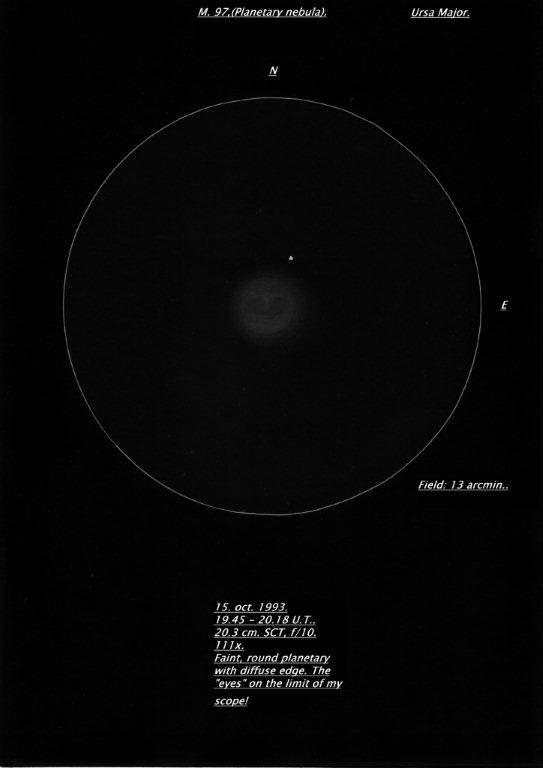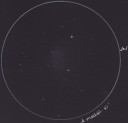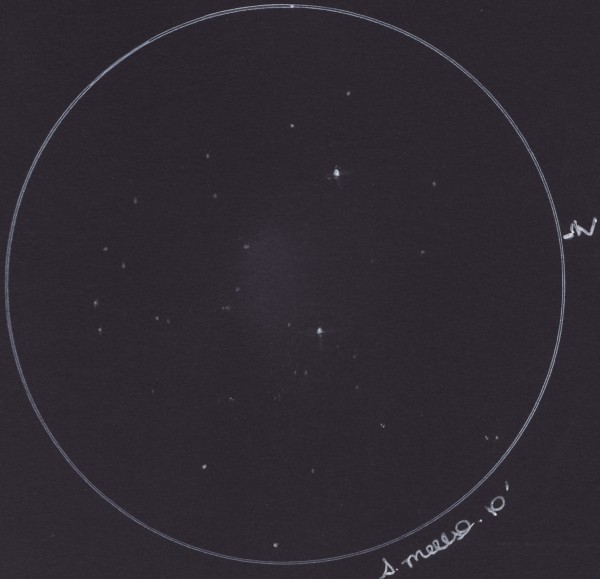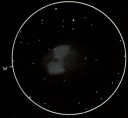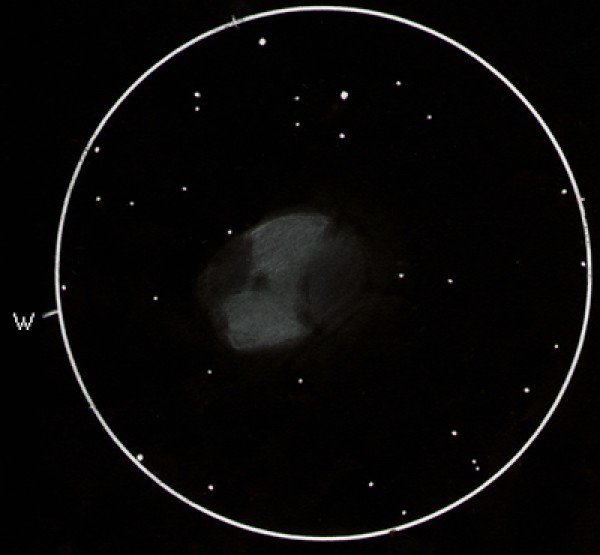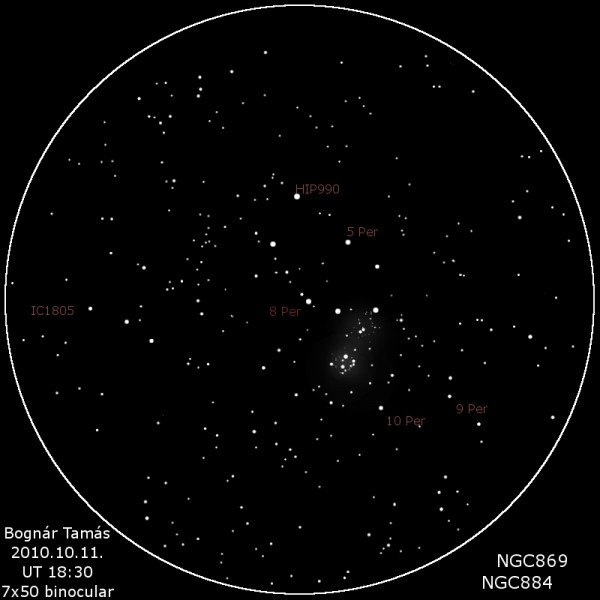
Messier 15 (NGC 7078 in Pegasus)
Messier 15 is my favorite bright, compact, globular cluster in the fall night sky. At magnitude 6.2 it is a bright globular target from poor suburban skies. The brightest stars of this target resolve well in a 10 inch scope. This globular is 33,600 light years distant and just filled with ancient stars.
This cluster is one of the densest of the 158 Milky Way globular clusters. It is the very first known to contain a planetary nebula (Pease 1) discovered in 1928 at Mt. Wilson Observatory.
The sketch was made with a wide field 24mm eyepiece at 60 x. The inset contains a higher magnification sketch using a 9mm eyepiece at 160 x.
Sketching:
Messier 15 (NGC 7078)
Date and Time: 11-1-2010, 10:15pm – 11:00pm local time
Scope: 10” f/5.7 Dobsonian. 24 mm and 9 mm eyepieces 60x and 160x
8”x 12” white sketching paper, B and 4B graphite pencils,
blending stump, scanned and inverted
Seeing: Pickering 6/10
Transparency: Average 3/5
Faintest stars visible overhead 4.3
Temperature: 4°C (40°F)
Cluster magnitude: 6.2, brightest member stars 12th magnitude
Distance: 33,600 ly
Location Constellation: Pegasus
Frank McCabe


